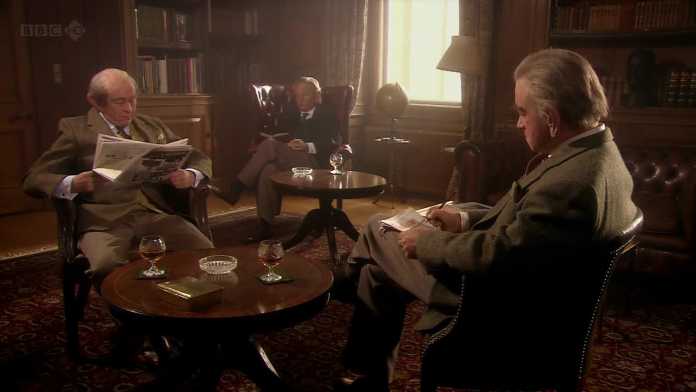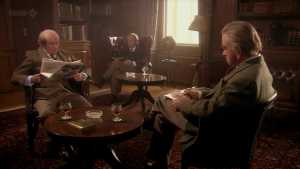
A man’s world

During my short stay, I came into contact with a handful of nurses, one or two consultants, a doctor, a secretary and a porter. All were great. All, bar one, were female.
At the time, I thought nothing of this. The quality of the service was of such a high standard that the gender of those providing it mattered not.

- External Walls: Up to €8,000 Grant
- Attic: Up to €1,500 Grant
- Cavity Walls: Up to €1,700 Grant
- Internal Dry Lining: Up to €4,500 Grant
Had the opposite been true, had I spent the day being cared for by an almost exclusively male team, would my experience have been any different? Well, I probably wouldn’t have flirted with the nurse taking my bloods if he’d been a burly bloke called Mark but, that aside, I imagine it would have been very much the same.
The HSE are permitted to hire staff based on their suitability for the role, whether male, female or otherwise. As a result, we, the public, get the very best care available, regardless of who’s on call. And this is how it should be, across all sectors I dare say.
Not everyone agrees. Some believe that the public sector should represent society as a whole, that gender, race and age should trump experience, ability and qualifications.
The Minister of State for Sport, Patrick O’Donovan, is one such person.
The Newcastle West TD has proposed the introduction of a gender quota across all national sporting governing bodies, decreeing that by 2019 any organisation with ten or more employees must be 30 per cent female. And should they fail to comply with the Minister’s new guidelines, the offending body will have their funding cut.
It is the Minister’s belief that installing more women in the boardrooms, executive suites and lounges of our major sporting organisations will have a knock-on effect, resulting in higher female participation across all sports and a slowing of drop out rates among teenage girls.
It’s broadly similar to the 2011 Gender Quotas Bill which saw a record number of female politicians gain seats in this year’s election. However, in that instance there was a surfeit of willing candidates, scores of ably-equipped women keen to prove why that particular legislation was long overdue.
Are there as many women ready to step into the fray this time around? Are there any?
Introducing a gender quota in Dáil Eireann is one thing, Governments should reflect society, they should be diverse, they should constantly evolve. Sport is different. Irish sport is very different.
Take the GAA; is there a more male-centric organisation on the planet? Its sports are played by males, coached by males, officiated by males and, most pertinently, governed by males. Such is its all-encompassing maleness that its female offshoots, camogie and ladies football, exist under entirely independent jurisdictions.

The IRFU and FAI are similarly masculine; of the combined 33 board members on their governing bodies just one is female. And, unlike the GAA, both the IRFU and the FAI are responsible for the day-to-day running of the women’s game.
Perhaps these institutions would benefit from having more women involved, but, by the same token, perhaps they’d benefit from having younger members, older members, more ethnic minorities and religious groups contributing to the decision making.
Minister O’Donovan has described this initiative as a way of helping women break through one of the last ‘glass ceilings’ in Irish society. But glass ceilings generally shatter as a result of intense pressure, a lengthy, protracted clamour which sees the entire structure crashing to earth, leaving a brand new hierarchy in its stead.
Where has the clamour for more female representation in the upper echelons of sport been? Maybe I’m blissfully ignorant and it’s been an issue for years, maybe women have been consistently denied positions of influence by the powers-that-be, forced to sit on the sidelines while dastardly men run our sporting organisations into the ground.
Or maybe there’s been absolutely no clamour. Maybe the FAI, IRFU and, to a lesser extent, the GAA, have followed best practises, hiring and appointing members based on their suitability for the role, ensuring that each of these high-profile sporting bodies continue to be run to the highest standards possible by the best people for the job.
I’m not for one second suggesting that appointing women to these respective boards will in any way negatively impact on performance; it might actually be fun to see those smug, self-satisfied fat cats in the FAI pulled out of their comfort zone, forced to consider things from a standpoint different to their own..
But ultimately, this is pure tokenism on the part of our Sports Minister, an unnecessary attempt to provide equality in an industry which will always be divided by gender, which is supposed to divided by gender.
Because, like it or not, sport will always be a male-dominated sphere. Yes, there will be revered women, national heroes like Sonia O’Sullivan, Katie Taylor, Niamh Briggs and Annalise Murphy, but they will forever be outnumbered by their male counterparts. That’s how the human race has evolved, men are more naturally inclined towards physical confrontation and competition, and as a result the majority of our sporting icons are male.
So, despite the Minister’s best intentions, it stands to reason that the majority of the people governing those males should also be male, does it not?
To ze or not to ze

Oh what a fool I felt. But I was not alone; the entire British media were duped by this piece of carefully planted ‘fake news’.
Putting aside my naivete for a moment, it’s worth noting that, given the increasingly leftist doctrines of most major colleges, the story seemed entirely plausible. And while Oxford University has yet to insist its students refer to one another in gender neutral terms, many American colleges have. So, bearing that in mind, here’s a snippet of what I had to say on the matter in today’s Post.
“I don’t wish to undermine the plight of those struggling with their identity, or make light of the discrimination suffered by these people on a daily basis, but changing the rules to appease a small minority is not how society is supposed to work.
But this is how colleges and universities are being run nowadays, with a luvvie agenda passed down from up top, the belief systems of sheltered academics foisted upon our most intelligent, most receptive, young minds.
Rather than prepare these high-achieving intellectuals for the real world, it serves only to cocoon them in a safe, friendly bubble, a kind of womb for fully-grown adults.
What happens when they emerge from this rarified environment and enter the cold, harsh environs of planet earth is anyone’s guess.”

